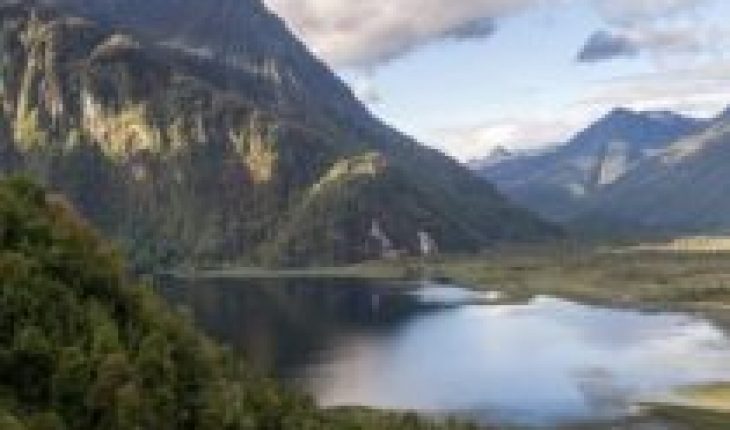
Chile relies heavily on the extraction of natural resources. Mining, forestry and fishing appear as the nation’s great livelihoods. However, there is also another possibility that very few see, or maybe do not want to see. Five consecutive times our country has won the award for “Best South American Destination of Nature”, awarded by the World Travel Awards, and while we are in the midst of a major crisis that strongly affects tourism, at some point we will be able to travel again and the desire to visit Chile will revive strongly. According to The Economist magazine’s predictions, post-covid tourism will return stronger. It is precisely here that we have a sustainable, participatory and varied alternative to growth.
We have a beautiful country, with a world-class nature. If others have the Caribbean Sea, we have spectacular forests, starty mountains, deserts, glaciers, volcanoes, lakes and a Patagonia that invites you to dream. Few countries have so many natural beauties and relatively easy access.
Tourism was a rising industry until the pandemic declaration, representing 9% of GDP in 2017 considering indirect contributions. Between 2008 and 2015 the increase in international tourist arrivals to the country increased by 65.6%, and between 2014 and 2015 alone grew by 21%, surpassing the arrival of 6 million tourists in 2017. From a national glance, 57% of Chileans residing in the country make at least one trip within Chile, privileging tourist areas near their residence. Just as Chile made a commitment to be a forestry country or to develop salmoniculture in the 1980s, it can also bet, and forcefully, on being a tourist country based on its nature, culture and protected areas.
New Zealand has 30% of its territory as a protected area and its first foreign exchange income is tourism. Tanzania has 25% of its territory in national parks and tourism is also its first foreign exchange income. What’s going on in Chile? we have more than 20% of the territory under some state protection figure, however the protected areas are far from the most populated areas. Between Coquimbo and Biobío, where three-quarters of the population live, only 1.5% of the territory is a protected area and large parks are scarce. This involves two things: on the one hand, for most Chileans nature is difficult to access; and, on the other hand, that without large parks there are no interesting experiences and challenges for receptive (international) tourism close to the best service areas.
A European tourist travels to Chile to get to know Torres del Paine because he has an offer of adventures of a week or 15 days. The development of our protected areas, quite abandoned and with a budget of 279 pesos per hectare by 2021, should be thought not only of the conservation of its flora and fauna and its fundamental role as part of the adaptation and mitigation of global warming, but also of the possibilities they provide of economic development linked to sustainable nature tourism.
Sustainable tourism creates identity and link with the territory, strengthens the local economy, promotes conservation and puts local communities, their stories and identity as protagonists of the territory. It makes us aware of the place we inhabit and allows the participation of many social actors, not just a private company. 97% of tourism companies are SMEs or Micropymes (Corfo 2013). In tourism he works from those who sell kneaded bread, lease horses or have cabins, to large hotel and transport companies. Tourism encourages the development of a more beautiful country, with more protected areas and with more nature, where everyone can have a better quality of life.
The proposal, then, is to think about protected areas and tourist developments that invite to be in an area for several days and, on the other hand, to incorporate portal communities or surroundings into the sustainable development strategy of these protected areas.
In this context, the call made by the citizen campaign We want to park the government, to protect the valleys of the Colorado and Olivares rivers creating a large protected area of 142,000 hectares, which today are abandoned public lands or reserved for mining, is a huge opportunity. 62% of these territories have mining concessions in exercise or requested, and the threat of exploitationion is imminent.
Creating this large park, next to Santiago, is a great business opportunity in a breathtaking territory, which would allow many Chileans who today have no opportunity to go to Torres del Paine, for example, have a similar experience just 60 kilometers from the capital.
We want Parque is to democratize access to nature, it is to give an important impetus to Santiago as the world capital of mountain tourism and that Chile move towards a new model of development, where sustainable tourism of nature is the largest foreign exchange income for the country.
If others can us too, we want Park.
The content poured into this opinion column is the sole responsibility of its author, and does not necessarily reflect the editorial line or position of El Mostrador.





![translated from Spanish: [VIDEO] Confirmed!: “Stupid and sensual Spiderman” effectively stopped thief in the heart of Alameda translated from Spanish: [VIDEO] Confirmed!: “Stupid and sensual Spiderman” effectively stopped thief in the heart of Alameda](https://ananoticias.com/wp-content/uploads/2019/08/translated-from-Spanish-VIDEO-Confirmed-Stupid-and-sensual-Spiderman-effectively-370x215.jpg)